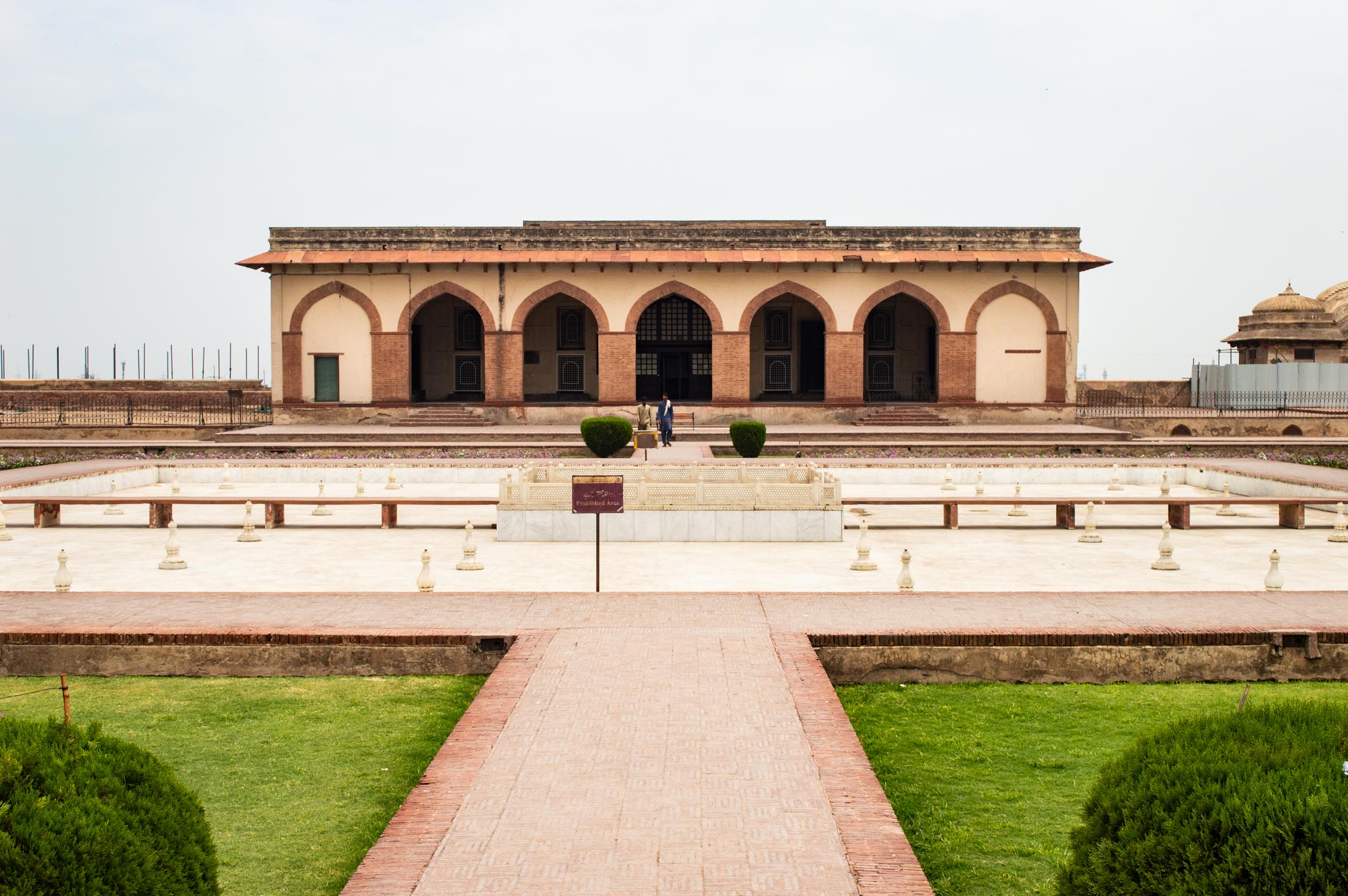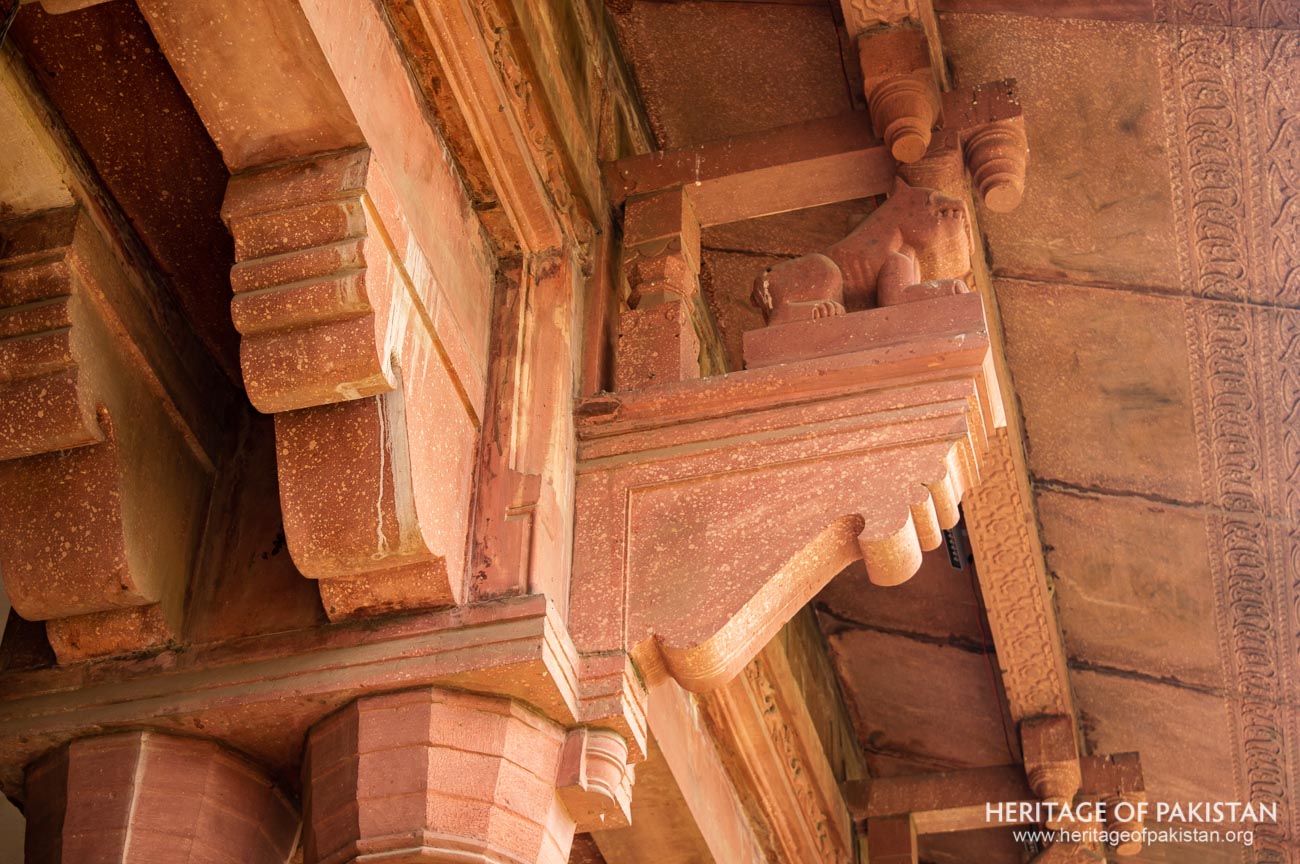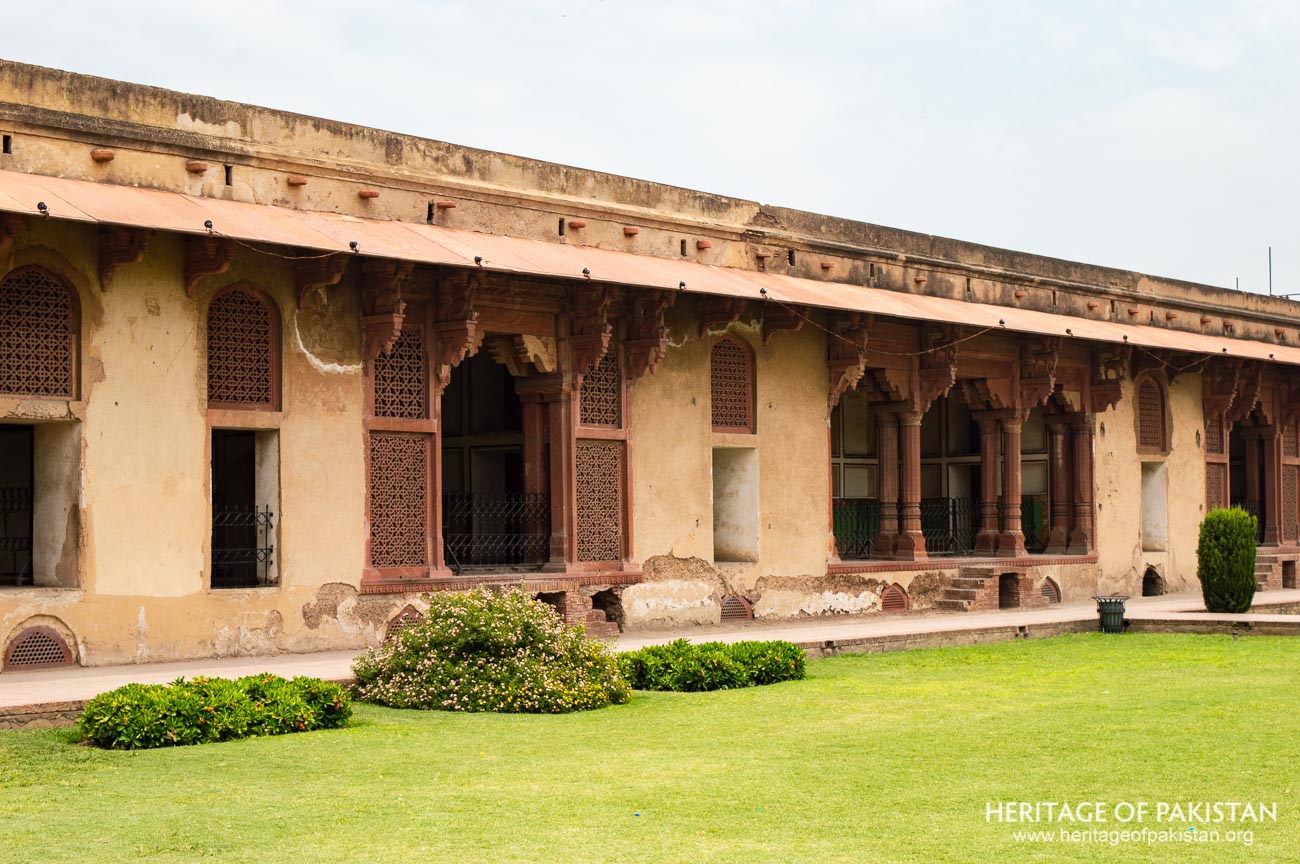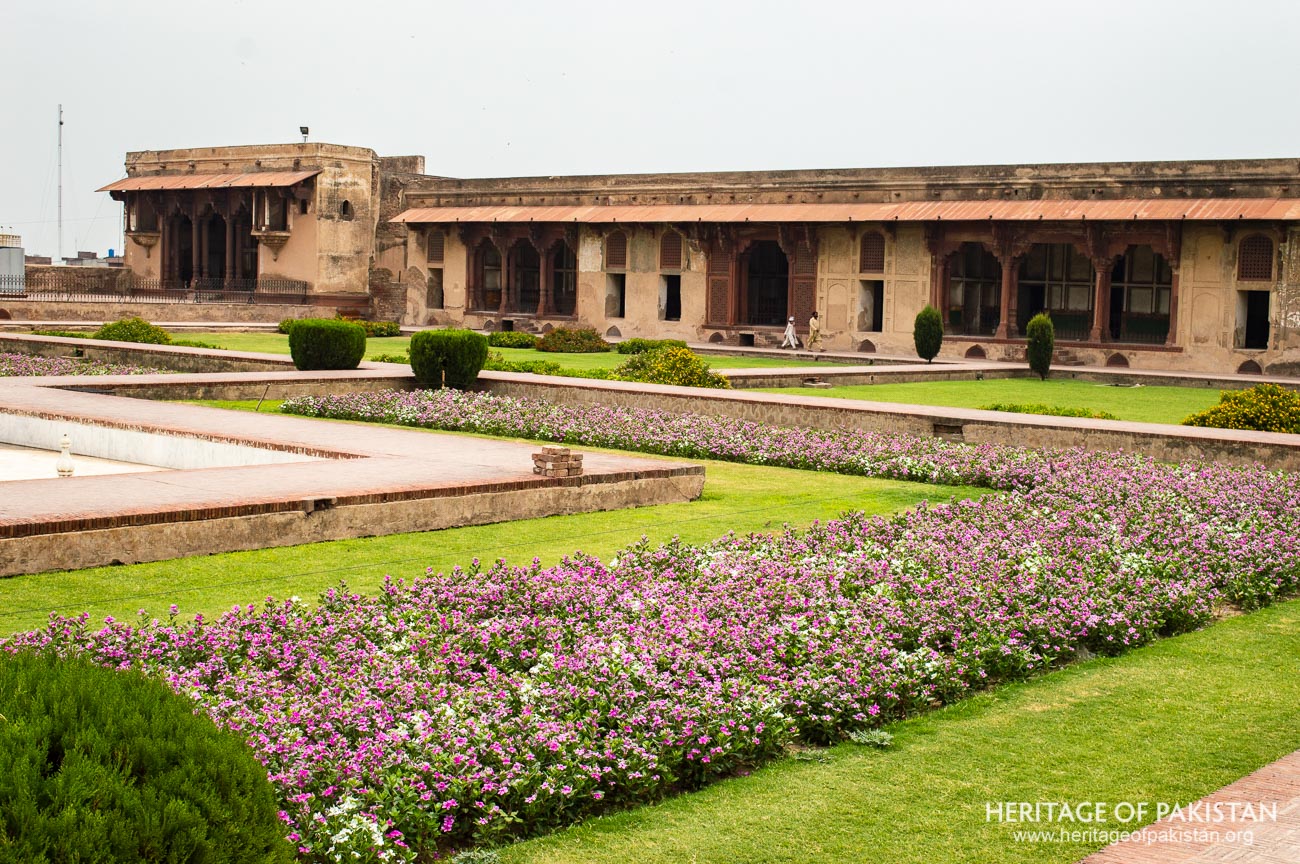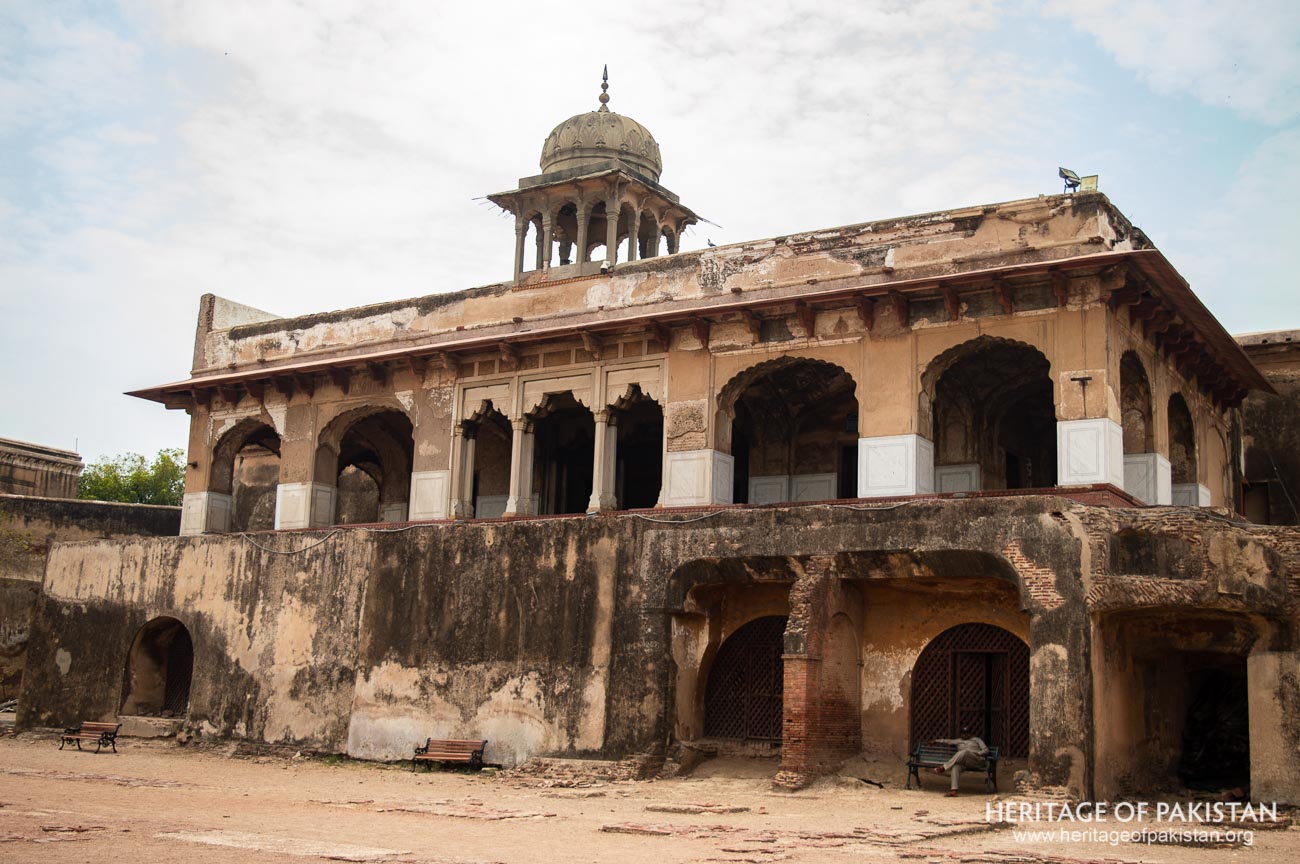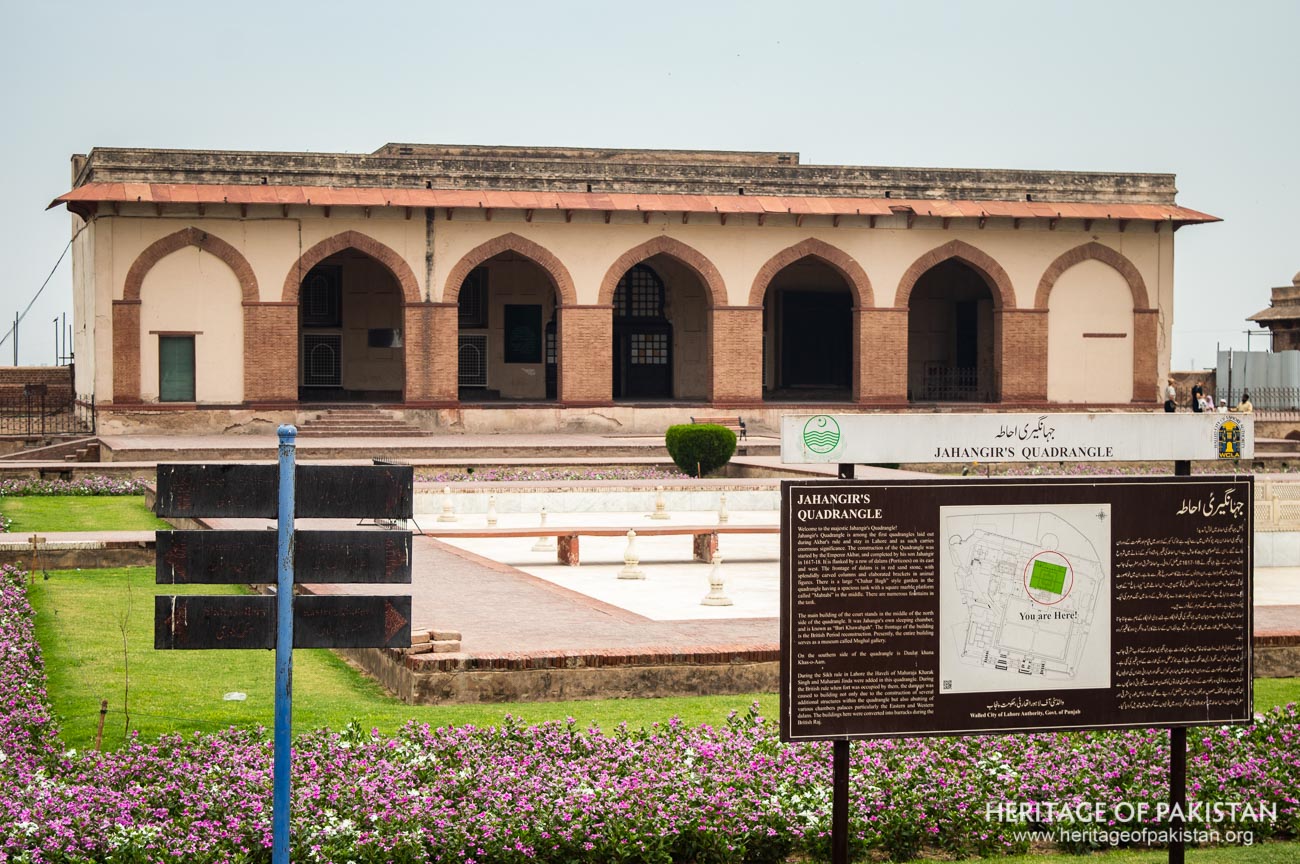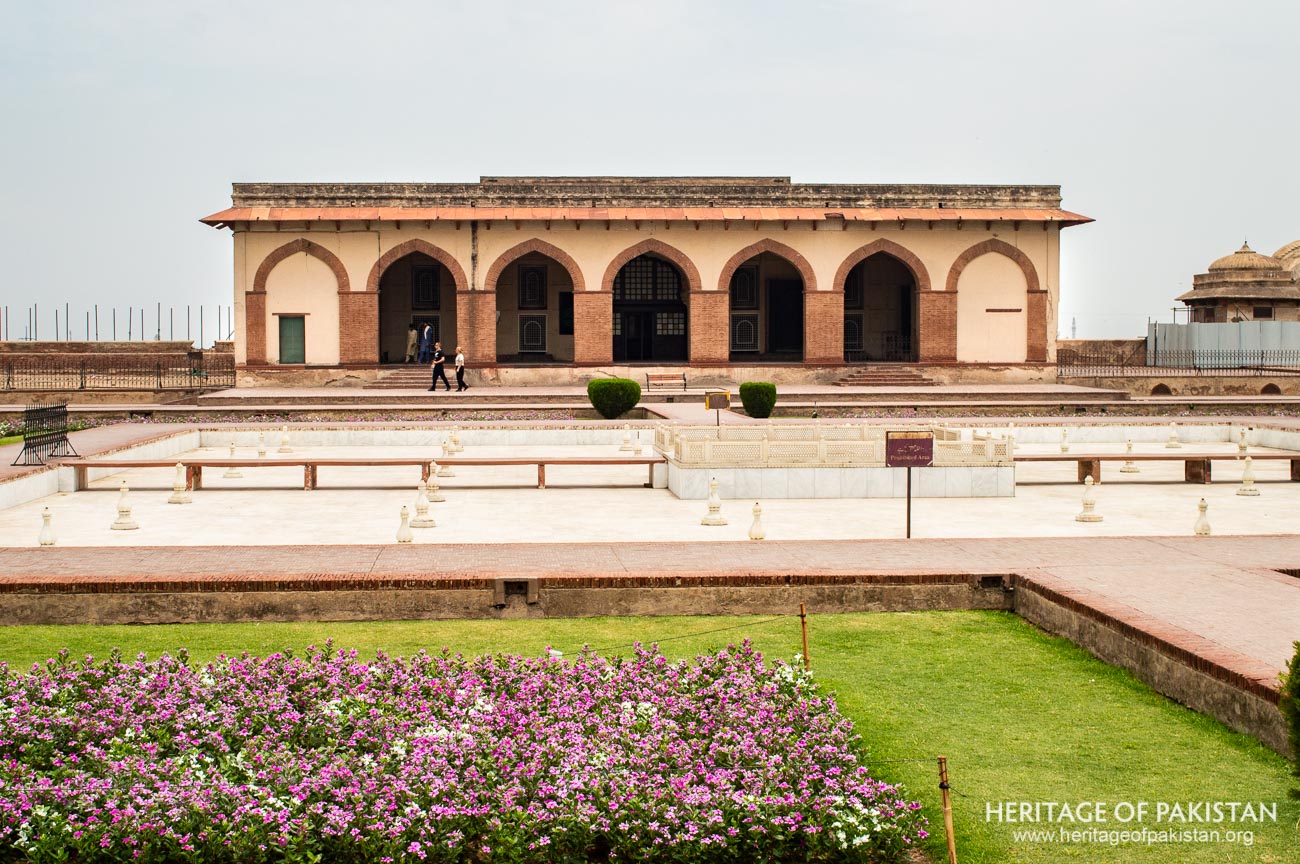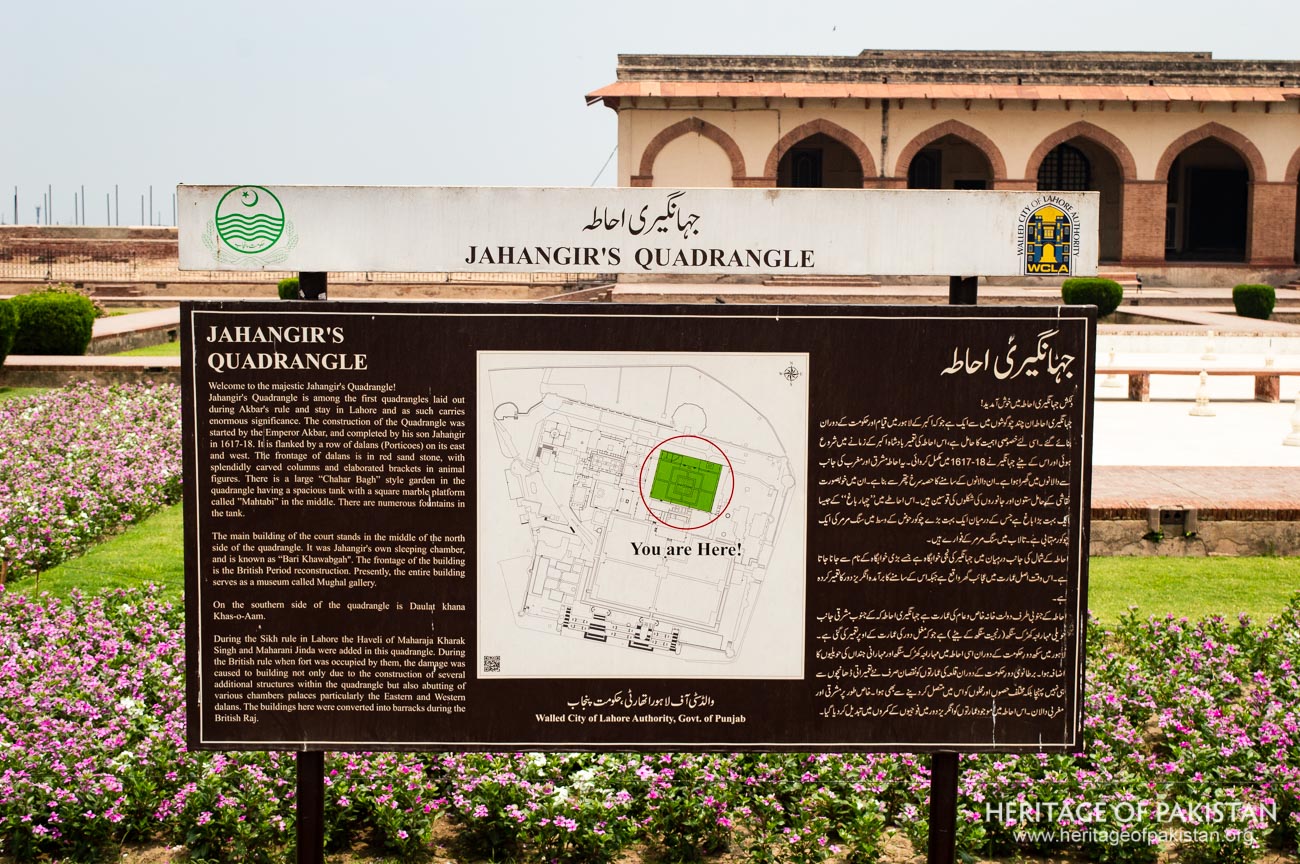Textarea
Jahangir’s Quadrangle is a significant section of the Lahore Fort associated with the Mughal Emperor Jahangir
The quadrangle includes the Barri Khwabgah (Sleeping Chambers of Emperor Jahangir), the Seh Dero (Sehdari Pavilion), the Shahi Hamam, and the Daulat Khana-e-Khas-o-Aam.
On the eastern side of the courtyard are dalans or porticoes constructed with intricately carved red sandstone columns and corbels shaped like animals.
This feature reflects an architectural influence drawn from Hindu temples
The central area of Jahangir’s Quadrangle in the Lahore Fort is occupied by a traditional Charbagh-style garden, featuring a large water tank with a square mahtabi (platform) at its center
The architectural character of Jahangir’s Quadrangle is marked by a combination of local brick construction and decorative red sandstone elements
The cells around the courtyard were used as lodges by travelers visiting the Tomb of Emperor Jahangir
This garden layout, with its classical Mughal symmetry and design, was noted by several visitors, including the German traveler Captain Leopold von Orlich, who documented his visit to the Lahore Fort in 1843.
The Barri Khwabgah, situated on the northern side of the quadrangle, was originally constructed as the emperor’s sleeping quarters
The sleeping chambers are currently being used as Mughal Gallery

